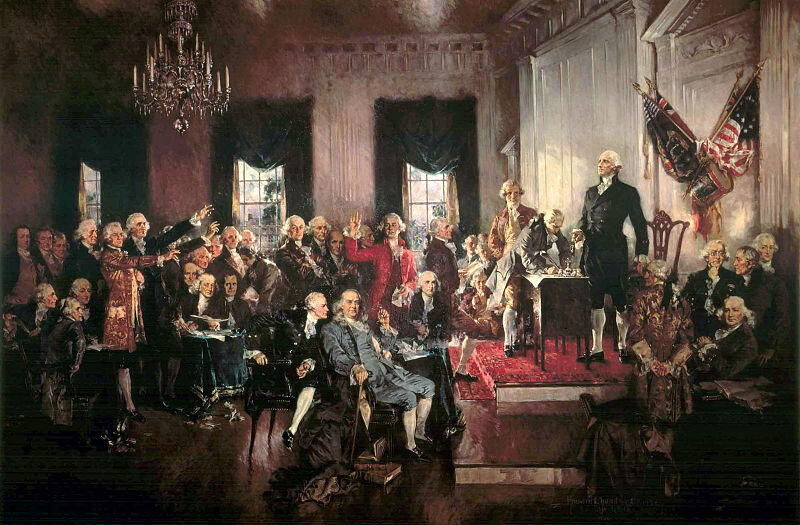The Articles of Confederation vs. The Constitution
by Clarissa Sanders, Director of Research & Collections
On November 15, 1777 the Continental Congress adopted the Articles of Confederation, the first constitution of the new nation. The Articles created a government in which the colonies - now states - retained most of the power. This left the central government weak, without essential powers like the ability to control foreign policy or to tax. In 1786, a group of western Massachusetts residents, led by former Continental Army Captain, Daniel Shay, rebelled because of the state’s high taxes and wartime debt. This event made it apparent that the federal government established by the Articles of Confederation was unable to address internal rebellions because it did not have the funds nor the military power to do so. In May 1787, the Constitutional Convention met in Philadelphia to address the shortcomings of the Articles. In September, the Constitution was born.
This photograph depicts Independence Hall. This building served as the setting for many important moments in American history - such as the signing of the Declaration of Independence and the ratification of the Articles of the Confederation.
Just ten years after the creation of the Articles of Confederation, the United States adopted a new constitution that was significantly different from its predecessor.
One of the most significant changes between the Articles of Confederation and Constitution was the creation of the three branches of government: the executive, legislative, and judicial. This separation of powers ensured that power would not be concentrated in one particular branch. Under the Articles of Confederation, there was no executive or judicial branch, and the legislative body was a single body appointed by the state legislatures. The Constitution created a bicameral legislature: the House of Representatives, elected by the popular vote; and the Senate, still appointed by the state legislature. Each member of the new Congress was granted a vote, while under the Articles each state was granted a singular vote. Members of Congress under the Articles served one year terms with term limits, while the Constitution made terms two years for Representatives and six years for Senators, with no term limits.
This painting entitled, "Scene at the Signing of the Constitution of the United States" was painted by Chandler Christy in 1940. It depicts George Washington, president of the convention, standing on a platform in room full of delegates. They are in Independence Hall.
The Constitution also gave the federal government more power over money and taxes. The new system of government allowed Congress to control interstate commerce and barred states from creating their own coined money. It also granted the federal government the power to tax individuals. The Articles of Confederation were written when rhetoric such as “Taxation without Representation” filled the political atmosphere. This meant that the Articles granted the central government no power to tax, but instead had to request money from the states, with little to no ways to enforce it. Without the ability to tax, the central government could not do essential taxes such as pay debts. Taxation increased the power of the federal government because it gave the new government the ability to raise and support the military, to pay Congress, and to fund its other functions.
Ultimately, the largest difference between America’s two governing documents is in that the Articles sovereignty resided in the states, and the Constitution was declared the law of the land when it was ratified which significantly increased the power of the federal government. The Articles were seen as stagnant, uneasily changed, and ineffective. The Constitution was created to be a living document, a document that can be amended, to meet the needs of a growing and changed nation.


